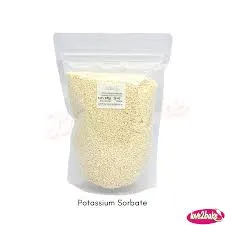
tcca trichloroisocyanuric acid
Understanding TCCA Trichloroisocyanuric Acid
Trichloroisocyanuric acid (TCCA) is a widely used compound in various industries, predominantly in water treatment, swimming pool sanitation, and as a bleaching agent in the textile and paper industries. Its importance lies in its powerful disinfectant properties and its ability to release chlorine when dissolved in water. This article aims to delve into the properties, applications, and safety considerations associated with TCCA.
Chemical Composition and Properties
TCCA is a white crystalline powder that contains 90% available chlorine in its commercial form. The chemical formula for trichloroisocyanuric acid is C3Cl3N3O3, and its structure consists of three chlorine atoms bonded to a triazine ring, which also includes a carboxylic acid functional group. This structure is responsible for TCCA’s stability and efficacy as a disinfectant. It decomposes slowly in water, allowing for a sustained release of chlorine, which is crucial for its role as a sanitizer.
Applications of TCCA
One of the primary applications of TCCA is in swimming pool maintenance. When added to pool water, TCCA effectively eliminates bacteria, viruses, and algae, ensuring that the water remains safe for swimming. Its long-lasting effect allows pool operators to maintain sanitary conditions with less frequent dosing compared to other chlorine products.
Moreover, TCCA is widely used in drinking water treatment. Its high chlorine content enables rapid disinfection, making it an effective choice for ensuring safe drinking water in both urban and rural areas, particularly in developing countries. The compound helps prevent waterborne diseases by neutralizing pathogens and other harmful microorganisms.
In addition to its use in pools and water treatment, TCCA serves as a bleaching agent in the textile and paper industries. Its chlorine-releasing properties make it effective for whitening fabrics and paper products, ensuring high-quality results in manufacturing processes.
tcca trichloroisocyanuric acid

Safety Considerations
While TCCA is an effective disinfectant, it is important to handle it with care. Being a strong oxidizer, it can pose hazards if not used correctly. Direct contact with skin or eyes can cause irritation, and inhalation of its dust can lead to respiratory issues. Therefore, safety measures such as wearing gloves, goggles, and ensuring proper ventilation are crucial when handling TCCA.
Furthermore, TCCA should not be mixed with other chemicals, especially those containing ammonia or organic compounds, as this can produce toxic gases. It is vital to follow the manufacturer’s guidelines regarding dosage and application to ensure safety and efficacy.
Environmental Impact
The environmental impact of TCCA is a subject of ongoing research. While it is effective in treating water, there are concerns regarding the residual chlorine it leaves in treated water. Excessive chlorine levels can harm aquatic life and disrupt ecosystems if not managed properly. Therefore, responsible dosing and effective neutralization methods are essential to minimize its environmental footprint.
Conclusion
In summary, trichloroisocyanuric acid (TCCA) plays a vital role in modern sanitation and water treatment practices. Its powerful disinfectant capabilities make it invaluable in ensuring safe swimming conditions and potable water for communities worldwide. However, like all chemical agents, it must be handled with care to mitigate potential health and environmental risks. With proper usage and awareness of its properties, TCCA can continue to contribute significantly to public health and safety.
-
Understanding Synthetic Rubber OptionsNewsApr.27,2025
-
Trichloroisocyanuric Acid: Essential for Clean and Safe WaterNewsApr.27,2025
-
Sodium Dichloroisocyanurate: Key to Safe Water TreatmentNewsApr.27,2025
-
Sodium Acid Pyrophosphate: Essential in Modern Food ProcessingNewsApr.27,2025
-
Essential Water Treatment ChemicalsNewsApr.27,2025
-
Denatured Alcohol and Its Industrial UsesNewsApr.27,2025
-
The Versatile Uses of Sodium BicarbonateNewsApr.24,2025
Hebei Tenger Chemical Technology Co., Ltd. focuses on the chemical industry and is committed to the export service of chemical raw materials.
-

view more DiethanolisopropanolamineIn the ever-growing field of chemical solutions, diethanolisopropanolamine (DEIPA) stands out as a versatile and important compound. Due to its unique chemical structure and properties, DEIPA is of interest to various industries including construction, personal care, and agriculture. -

view more TriisopropanolamineTriisopropanolamine (TIPA) alkanol amine substance, is a kind of alcohol amine compound with amino and alcohol hydroxyl, and because of its molecules contains both amino and hydroxyl. -

view more Tetramethyl Thiuram DisulfideTetramethyl thiuram disulfide, also known as TMTD, is a white to light-yellow powder with a distinct sulfur-like odor. It is soluble in organic solvents such as benzene, acetone, and ethyl acetate, making it highly versatile for use in different formulations. TMTD is known for its excellent vulcanization acceleration properties, which makes it a key ingredient in the production of rubber products. Additionally, it acts as an effective fungicide and bactericide, making it valuable in agricultural applications. Its high purity and stability ensure consistent performance, making it a preferred choice for manufacturers across various industries.











